
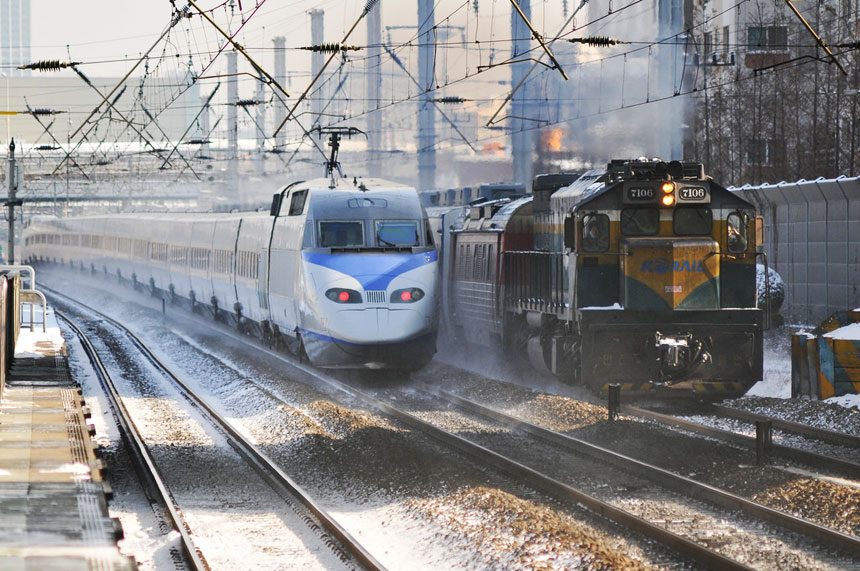 Image credit: Doo Ho Kim/Flickr
Image credit: Doo Ho Kim/FlickrYou surely don’t want to find yourself sitting on the floor of Seoul’s Incheon International Airport not knowing what to do next.
That’s why it’s best to learn what modes of transportation are available in Seoul before you actually land at the airport.
Incheon International Airport is the largest airport in South Korea and the 22th busiest airport in the world. It sits 47 km away from the Seoul Station, which is considered to be the center of Seoul.
This central station serves as a major transportation hub, which allows you to reach any area of Seoul via various modes of transportation.
Now, let look at different ways to get to city and choose the most suitable option for yourself.
See also: Best Ways to Get Around in Seoul
Just like most other major cities in the world, Seoul is offering discounts for using public transportation if you pay via a special transportation card.
T-Money card
That transportation card in Seoul is the T-Money card, which can be used on pretty much all modes of transportation in the city, including metro, bus and even taxis.
T-Money gives you a 100 won ($0.09) fare discount for metro and buses, as well as additional transfer discounts between buses and metro lines.
The T-Money card is either prepaid or postpaid (using a credit card). The prepaid T-Money card costs 2,500 won ($2.2) and can be purchased at every metro station or convenient stores (7-Eleven, CU, GS 25, etc.).
If you’re leaving Seoul and you still have some money on the card, you can get a refund for the remaining balance after a 500 won ($0.44) service charge.
M-Pass card
There is also the M-Pass card, which was made for tourists who need to use Seoul public transportation multiple times per day for several days.
You use the M-Pass card for free rides up to 20 times a day regardless of the distance for 1 to 7 days (depending on which type of M-Pass card you purchase).
The card can be used on most subways and public buses, and it can also serve as the regular T-Money card (M-Pass card has built-in T-Money function) if you load it up with additional funds.
You can purchase the M-Pass card at the tourist information center on the 1st floor of the Incheon International Airport (in front of Exit 5 and Exit 10).
The price of the M-Pass card depends on the card type: 1-day 10,000 won ($8.81); 2-day 18,000 won ($15.86); 3-day 25,500 won ($22.46); 5-day 42,500 won ($37.44) and 7-day 59,500 won ($52.42).
The M-Pass card is valid for one month from the date of the purchase. The card is activated upon first use and expires at 23:59 of the last day. For example, if you start using the 2-day M-Pass card today, it will be expired at 23:59 tomorrow.
Seoul City Pass card
Seoul also has Seoul City Pass cards, which combine the benefits of T-Money cards with providing discounts for certain tourist attractions, exhibitions and restaurants.
With the Seoul City Pass card, you can use metro lines and public buses for free up to 20 times per day. You can also enjoy discounts on the fares of Seoul City Tour Buses, which travel around the city and stop at many tourist attractions.
Seoul City Pass cards are available for purchasing at tourist information centers, subway stations, and convenience stores including those stores at Incheon Airport’s Arrivals Hall.
The card is available at 15,000 won ($13.21) for 1-day pass; 25,000 won ($22) for 2-day pass; and 35,000 won ($30.83) for 3-day pass.
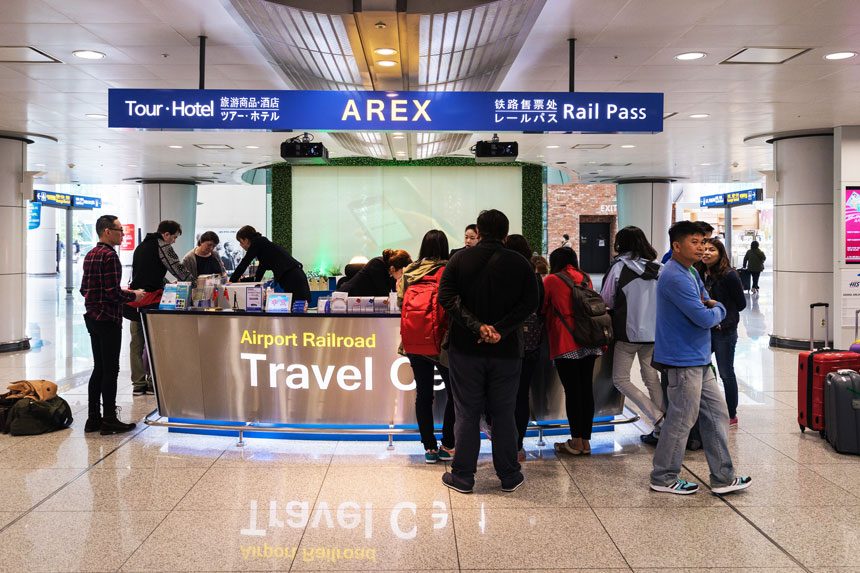 Image credit: Wei-Te Wong/Flickr
Image credit: Wei-Te Wong/FlickrUsing the Airport Railroad Express (AREX) service is the fastest and the cheapest way to get from the airport to central Seoul.
The AREX operates two types of trains: the Express train, which makes no stops along the way, and the All-Stop train, which makes 10 stops before it reaches Seoul Station.
Although the All-Stop train is nearly two times cheaper than the Express train, it takes it about 15 more minutes than the Express train to reach central Seoul.
However, the All-Stop train is still a faster and a much cheaper way to go to central Seoul from the airport compared to taxi services.
Whether you use the Express train or All-Stop train there is always benefit of avoiding road traffic. Both trains and roads in Seoul are crowded during rush hours, so you’ll have to choose: either squeeze yourself in the train or be stuck in traffic in a taxi.
The only two major disadvantages of the Airport Railroad service is (1) that it can’t take you door-to-door to your hotel like airport buses and taxis can, and (2) there is a high chance you’ll have to stand while traveling.
To use the Express train, you must hold a Express Train Pass, which can be purchased at the Airport Railroad station.
Express train’s advantages: Free Wi-Fi, pre-assigned seat system, free electric cart service, faster than the All-Stop train, discounts for a group of travelers.
Express train’s disadvantages: More expensive than the All-Stop train, low frequency (train departs every 30 to 45 minutes), operates only until 21:45.
All-Stop train’s advantages: Cheaper than the Express train, runs every 5 to 15 minutes, allows to transfer to other metro lines along the way, operates almost until midnight.
All-Stop train’s disadvantages: No pre-assigned seat system, takes longer time than the Express train to reach Seoul station.
If you’re traveling in a group of three or more people, each of you pays only 6,000 won ($5.29) instead of 8,000 won ($7.05)
The All-Stop train makes 10 stops before it reaches Seoul Station, including Gyeyang, Gimpo Int’l Airport, Digital Media City, Hongik University, and GongDeok.
The trains depart at Airport Station, Transportation Center, which is located at Passenger Terminal’s B1 (basement).
Travel time: 43 minutes on Express; and 58 minutes on All-Stop
Cost: 8,000 won ($7.05) for Express; and 4,150 won ($3.66) for All-Stop
Service hours: 05:20 – 21:45 for Express; and 05:23 – 23:42 for All-Stop
Service schedule: Interval approximately 30 to 45 minutes for Express; and every 5 to 15 minutes for All-Stop
Notes
– During rush hours, try the tail car of the train, as there is a higher chance to take a seat on the train.
– Fares above are provided for T-Money cards. If you’re using a single-journey card, you’ll have to pay 100 won more ($0.09).
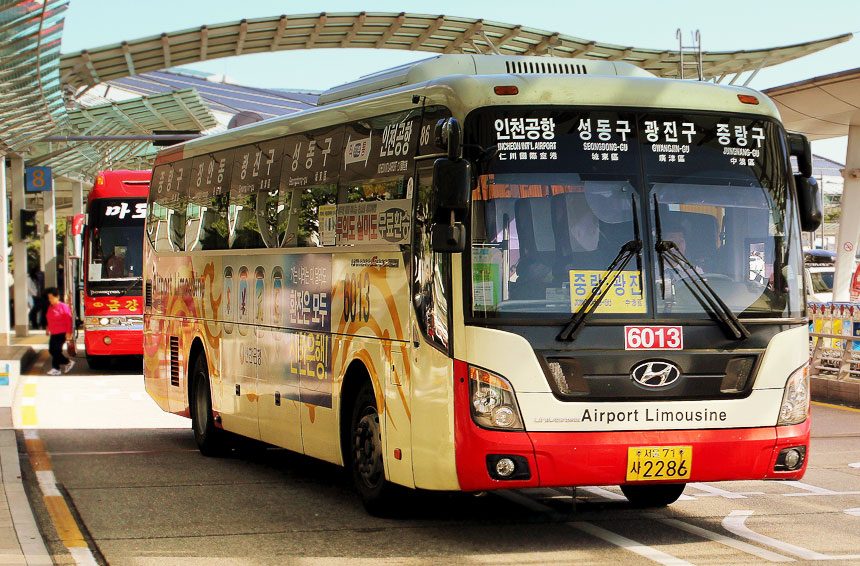 Image credit: calflier001/Flickr
Image credit: calflier001/FlickrTaking an airport bus is an affordable and comfortable way to go from the airport to central Seoul.
Even though it’s a little more expensive than taking the Airport Express train (see above), it’s a more relaxing way to reach your destination, since there is a large chance you’ll have to stand on your trip to Seoul Station in the train.
The Airport buses, meanwhile, are equipped with comfy seats and air conditioning, which makes it a perfect choice for those who want to relax or take a nap for a little more than an hour after a long flight.
There are two types of airport buses: standard and deluxe buses. Standard buses make more stops along the way, thus reaching the destination slower than deluxe buses. Standard buses are also more crowded.
Deluxe buses, which are provided by KAL Limousine company, are more spacious and make fewer stops along shortened routes, which means they reach the destination faster than standard buses.
Another great advantage of airport deluxe buses is that they take you straight to your hotel (if it’s in the list), while the airport express trains can only take you as far as a subway station.
You can purchase bus tickets at the Airport Bus Ticket Booth outside the Arrival Area on the 1st floor.
Check the ticket to see the corresponding gate, bus stop location, and departure time.
Travel time: 65 to 80 minutes (without traffic)
Cost: 9,000 – 10,000 won ($7.93 – $8.81) for standard bus; 14,000 – 16,000 won ($12.33 – $14.1) for deluxe bus; and 16,000 won ($14.1) for night bus
Service hours: 24 hours
Service schedule: Every 10 to 15 minutes (every 40 to 50 minutes for night buses)
Notes
– How to read the ticket: the number shows the gate number, the letter shows left (A) or right (B) side (‘02A’ find your bus on the left side of Gate 2).
– Airport buses have pre-recorded English announcements on board.
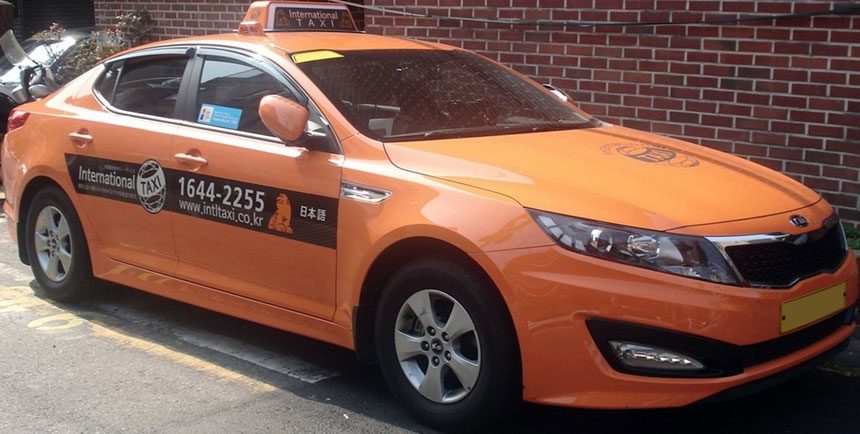 Image credit: Chu
Image credit: ChuAlthough taking a taxi to central Seoul is at least 7 times more expensive than using the Airport Express train, you’ll be taken door-to-door to your hotel.
Thus, you won’t have to wander around the streets, with your luggage, trying to find your hotel after you arrive at Seoul Station by train. Take note that not many hotels are located near Seoul station.
Taxi is not an ideal option for solo travelers but it is always a good deal for those who travel in group of 3 to 4.
You can either use the International Taxi service at the airport or pick up a regular taxi. There is a number of advantages of using the International Taxi service: Lower cost, flat fare, no additional fees for luggage, no tollgate fees, no midnight surcharges, the driver is English-speaking.
In order to book a taxi, exit the airport through any gate (Gates 4 to 8) of the Arrival Area, cross the street and approach the taxi stands (4D – 8C).
Travel time: 60 to 70 minutes (without traffic)
Cost: between 55,000 and 75,000 won ($48.45 to $66.07) on international taxi service, and between 60,000 and 100,000 won ($52.86 to $88.09) on standard taxi
Service hours: 24 hours
Notes
– If you’re taking a regular taxi, there is an extra 20% surcharge of the base fare in the period between 00:00 and 03:59.
– You can check the International Taxi service fare here.
– Most taxis are equipped with GPS, which means you can easily reach your destination.
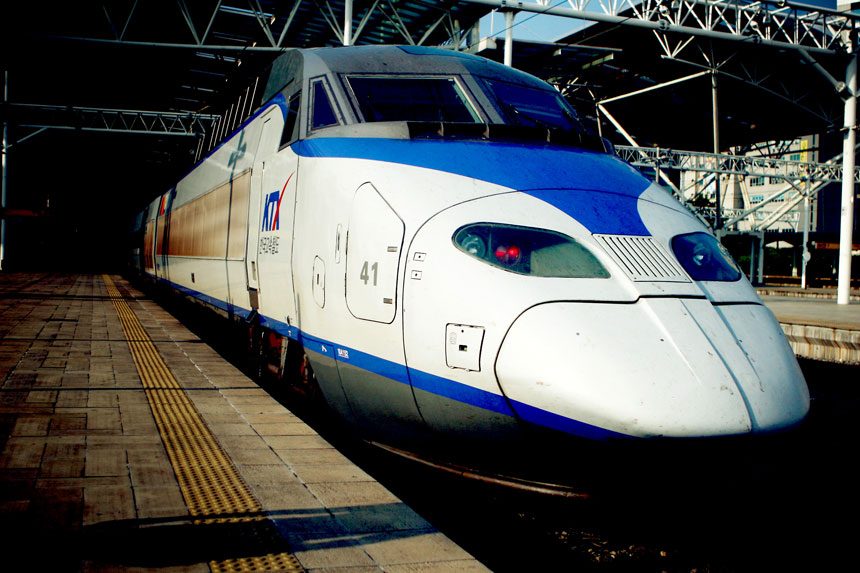 Image credit: Kevin Jaako/Flickr
Image credit: Kevin Jaako/FlickrKorea Train eXpress (KTX) is South Korea’s high-speed rail system that connects the country’s major cities, including Seoul, Busan and Mokpo.
If you are very lucky to arrive Incheon airport at “good times”, you can catch a KTX train to get to Seoul station (KTX trains depart at the airport only 10 times a day, and you may have to wait up to 3 hours for the next train).
Although not the smartest way to leave the airport (unless you’re traveling not to Seoul, but to other South Korean cities), it’s still an affordable and a pretty quick way to reach central Seoul.
Travel time: 45 to 50 minutes
Cost: Standard 12,500 won ($11); standing 10,600 won ($9.34); and first class 17,500 won ($15.42)
Service hours: 06:55 – 20:35 daily
Service schedule: You can check KTX timetable here.